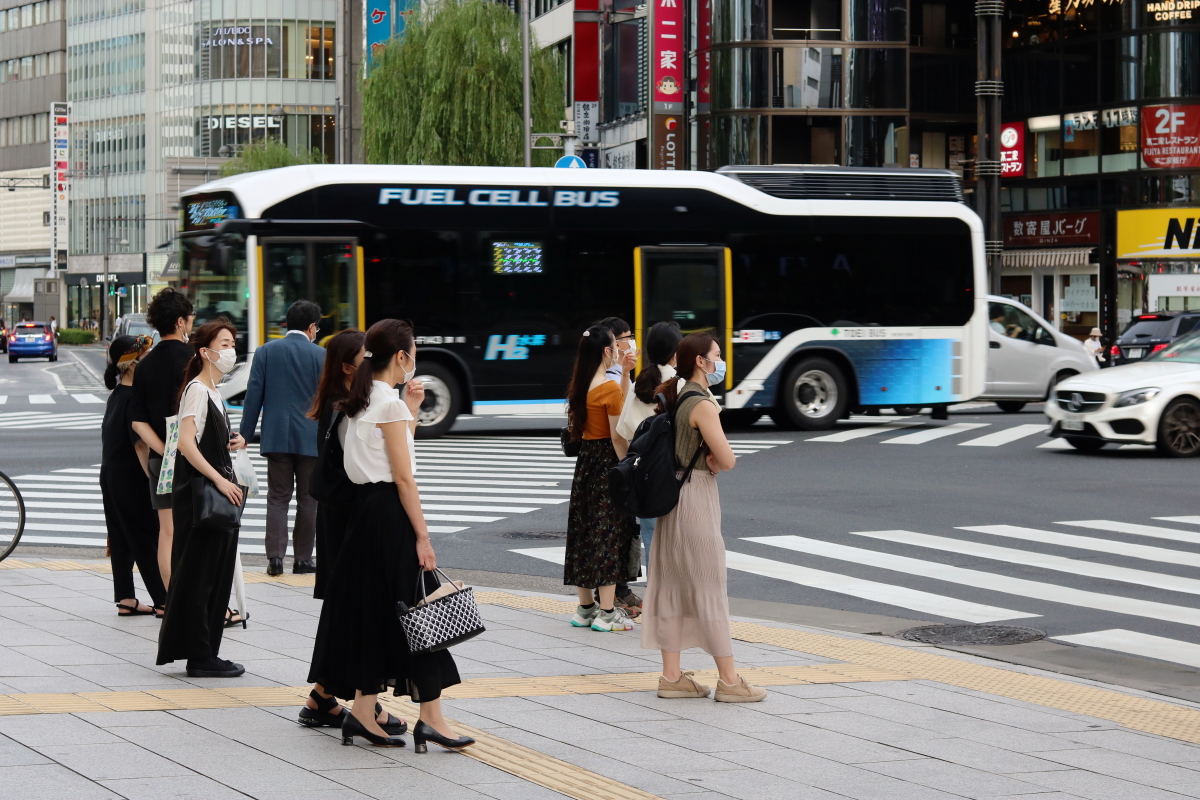Power-starved and fossil-fuel-dependent Japan is banking on green hydrogen to decarbonise its economy and foster the country’s industrial competitiveness. Japan is a major producer of green hydrogen in the world and now plans to expand the production of this green energy to meet its power requirements.
Japan has already rolled out 195 hydrogen refuelling stations since 2013 – the largest in the world according to 2021 research. Though the Japanese government offers financial support to construct and operate them, the costs are very high.
However, more and more companies are focussing on hydrogen – from building more fuelling stations to production powered by hydrogen
Japan’s green hydrogen initiative
With a view to expanding the country’s green hydrogen use, Air Liquide has announced it will invest in and build Japan’s first 24/7 hydrogen refuelling station in Motomiya City in the Fukushima Prefecture. According to the plans, the hydrogen refuelling station (HRS) will become operational in the first half of 2024 and meet the rising requirement for green hydrogen for fuel cell commercial vehicles.
The hydrogen refuelling station in Motomiya City will be the first such facility to be built based on the MoU signed between Air Liquide, ITOCHU ENEX and ITOCHU Corporation. Two refuelling stations will be built under the project at the site with the capacity to accommodate fleets of commercial vehicles.
The 24/7 hydrogen refuelling station in the Fukushima Prefecture is the 14th such project being built by Air Liquide Japan in collaboration with Japan Hydrogen Mobility (JHyM), an association of 30 companies that plans to hasten the expansion of hydrogen refuelling stations across Japan. Aside from receiving fiscal support from JHyM, the project is receiving subsidies from Japan’s Ministry of Trade, Commerce and Industry (METI) and Fukushima Prefecture.
The proposed 24/7 hydrogen refuelling station in Motomiya City aims to support the government’s ambition. In December 2020, Japan, the fifth largest emitter of CO2 in the world, announced the ‘Achieving Carbon Neutrality in 2050’ and in June 2021, the government reiterated that green hydrogen will be one of the priority sectors of the green growth strategy. Now, Japan aims to become a hydrogen superpower by sustaining 320 HRS and 200,000 Fuel Cell Electric Vehicles (FCEVs) on road by 2025.
Steelmakers plan to use green hydrogen
Automobile and steel are two leading industries in Japan which are also pushing for a greener future. While automakers are investing heavily to boost the production of batteries for their electric vehicles, many top Japanese steelmakers recently revealed their plans to develop technology by 2030 to produce superior-quality steel using electric and hydrogen furnaces to reduce carbon emissions. According to a report published by the German Japanese Energy Transmission Council (GJETC), about $72 bn (10 trillion yen) will be needed to decarbonise Japan’s steelmaking.
Recently, Nippon Steel unveiled a model blast furnace that would be powered by hydrogen. The prototype developed at the company’s plant in Chiba Prefecture is a 20-metre-high structure called Course50. Other steelmakers are also working on projects to make steel using hydrogen. For instance, JFE Steel and Nippon Steel are constructing a small trial hydrogen-powered blast furnaces at Ibaraki and Chiba prefectures, respectively. These trial furnaces are expected to begin operation in 2025 and 2024, respectively. These initiatives are receiving funds from the Japanese government’s Green Innovation Fund.
Developing hydrogen supply chains
One of the top priorities of the Japanese government is developing hydrogen supply chains. Both the government and renewable energy companies are implementing different projects for developing maritime transport. For instance, Kawasaki Heavy Industries Ltd. introduced the first liquefied hydrogen vessel in the world in 2019 and completed work on the world’s first liquefied hydrogen receiving terminal in Japan in the following year. Japan plans to establish a manufacturing technology base by 2030 to produce green hydrogen from household renewable sources.
Since June 2021, Toyota Motor Corporation and Fukushima Prefecture have been discussing a few initiatives with several partners to develop and implement a model for using hydrogen as a fuel in cities having populations of roughly 300,000 before applying the model to similar-sized cities nationwide. Meanwhile, Denso Fukushima aims to develop hydrogen production for consumption in Fukushima Prefecture. A series of prototype projects have been launched in the prefecture for local companies to utilise hydrogen commercially.










 Australia
Australia China
China India
India Indonesia
Indonesia Japan
Japan Malaysia
Malaysia Philippines
Philippines Singapore
Singapore South Korea
South Korea Taiwan
Taiwan Thailand
Thailand Vietnam
Vietnam Germany
Germany Hong Kong
Hong Kong USA
USA Switzerland
Switzerland Singapore
Singapore
 United Kingdom
United Kingdom







